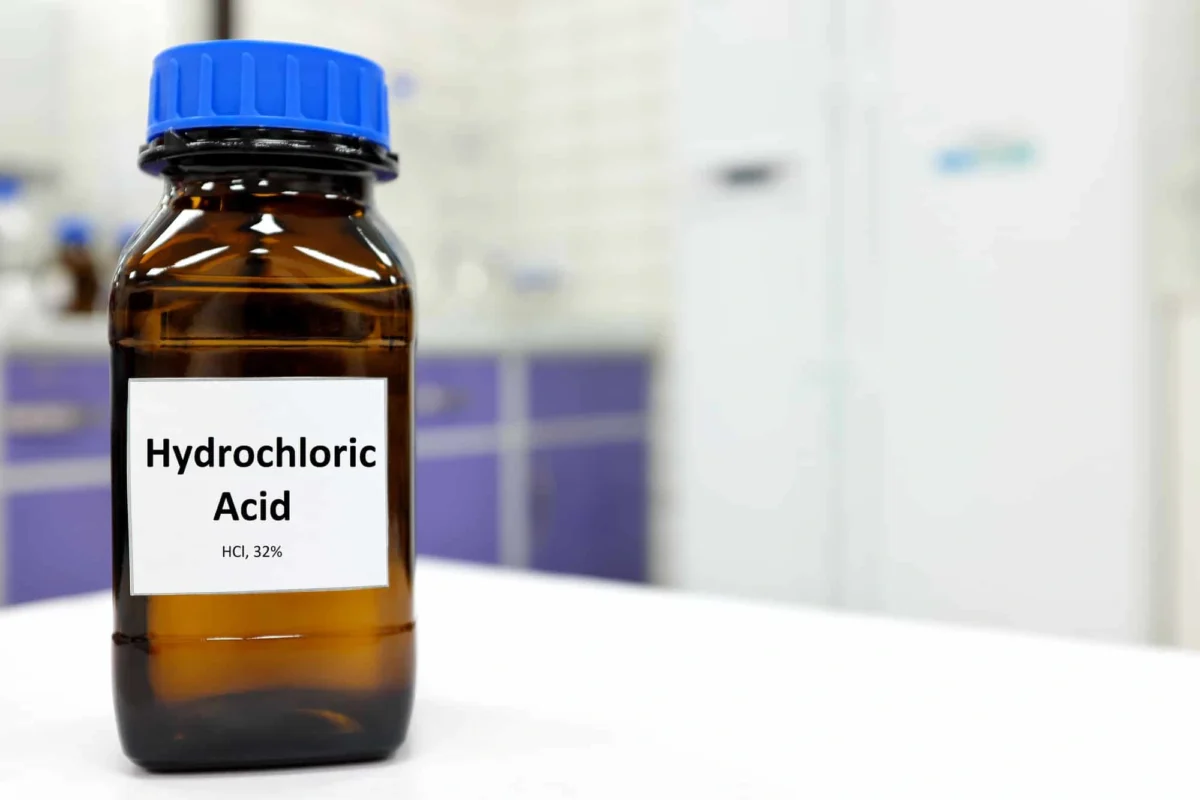Blog
What Happens When Hydrochloric Acid Reacts with Sodium Hydroxide?
Have you ever wondered what happens when hydrochloric acid reacts with sodium hydroxide? This common chemical reaction is an example of an acid-base neutralization process, resulting in the formation of water and salt. In this article, we will explore the reaction in detail, breaking it down into simple steps and understanding the science behind it. By the end, you’ll gain a clear understanding of this essential chemical reaction and its practical uses in various industries.
Understanding Hydrochloric Acid and Sodium Hydroxide
Before we dive into the reaction, it’s important to understand the properties of the two chemicals involved. Hydrochloric acid (HCl) is a strong acid commonly found in laboratories and industries, while sodium hydroxide (NaOH) is a strong base, often used in cleaning and manufacturing processes.
Hydrochloric Acid and Sodium Hydroxide: A Comprehensive Guide
What happens when hydrochloric acid reacts with sodium hydroxide is a neutralization reaction. When combined, these substances form a new compound, water (H₂O), and a salt, sodium chloride (NaCl), which is common table salt.
The Reaction: What Happens When Hydrochloric Acid Reacts with Sodium Hydroxide?
The reaction between hydrochloric acid and sodium hydroxide follows a straightforward formula:HCl+NaOH→NaCl+H2O\text{HCl} + \text{NaOH} \rightarrow \text{NaCl} + \text{H}_2\text{O}HCl+NaOH→NaCl+H2O
This balanced equation shows that one molecule of hydrochloric acid (HCl) reacts with one molecule of sodium hydroxide (NaOH) to produce one molecule of sodium chloride (NaCl), along with one molecule of water (H₂O).
1. The Role of Hydrochloric Acid in the Reaction
Hydrochloric acid is a source of hydrogen ions (H⁺), which are key to the acid part of the reaction. These hydrogen ions react with hydroxide ions (OH⁻) from sodium hydroxide to form water. This process neutralizes both the acid and the base.
2. The Role of Sodium Hydroxide in the Reaction
Sodium hydroxide, on the other hand, provides the hydroxide ions (OH⁻) that are essential in neutralizing the hydrogen ions from the hydrochloric acid. The interaction between the H⁺ ions and OH⁻ ions produces water as a byproduct, leaving behind sodium chloride as the salt.
Why Does the Neutralization Occur?
The reason hydrochloric acid reacts with sodium hydroxide in this way is due to the fundamental properties of acids and bases. Acids release hydrogen ions (H⁺), while bases release hydroxide ions (OH⁻). When these two ions meet, they combine to form water, a neutral substance, which is the foundation of any neutralization reaction.
What Are the Products of This Reaction?
As mentioned earlier, the reaction between hydrochloric acid and sodium hydroxide produces two main products:
- Water (H₂O): The combination of hydrogen ions (H⁺) and hydroxide ions (OH⁻) leads to the formation of water.
- Sodium Chloride (NaCl): This is the salt formed from the interaction of sodium (Na⁺) and chloride ions (Cl⁻).
This process is typical of acid-base reactions, where the acidic and basic components cancel each other out, forming neutral substances.
Practical Applications of This Reaction
The reaction between hydrochloric acid and sodium hydroxide has numerous real-world applications:
- In laboratories: The neutralization of acids and bases is fundamental in titrations and other scientific procedures.
- In industry: This reaction is essential in cleaning processes, where acids and bases neutralize each other to maintain safe conditions.
- In the human body: The stomach uses hydrochloric acid to digest food, and sodium bicarbonate (a weak base) neutralizes the acid to maintain proper pH balance.
What Happens If the Reaction is Not Balanced?
If the reaction between hydrochloric acid and sodium hydroxide does not reach proper balance, it can result in a solution that is either too acidic or too basic. In such cases, the resulting mixture could cause irritation or damage to materials and living tissues. That’s why understanding the exact proportions of acid and base is crucial in chemical reactions.
Is the Reaction Exothermic or Endothermic?
One interesting aspect of this reaction is its exothermic nature. When hydrochloric acid reacts with sodium hydroxide, the process releases energy in the form of heat. This heat release is due to the formation of strong bonds between the hydrogen and hydroxide ions, resulting in the production of water. However, the amount of heat released is relatively small compared to other chemical reactions.
How to Perform the Reaction Safely?
If you’re performing this reaction between hydrochloric acid and sodium hydroxide, safety should always be a priority. Follow these steps to ensure a safe process:
- Wear protective equipment such as gloves and goggles.
- Use proper ventilation when handling hydrochloric acid and sodium hydroxide.
- Neutralize slowly to prevent a sudden release of heat or any splashing.
- Dispose of the resulting mixture properly, as the salt formed is typically safe, but large amounts should be handled with care.
Environmental Impact of Hydrochloric Acid and Sodium Hydroxide Reactions
Although the reaction between hydrochloric acid and sodium hydroxide produces safe byproducts like water and salt, it’s essential to be mindful of the environmental impact. In large-scale industrial processes, proper disposal of excess acid and base is crucial to prevent soil and water contamination.
Conclusion: What Happens When Hydrochloric Acid Reacts with Sodium Hydroxide?
In conclusion, the reaction between hydrochloric acid and sodium hydroxide is a fundamental example of acid-base neutralization. This reaction produces water and sodium chloride (table salt), demonstrating the basic principles of chemistry in action. Whether in a lab, industrial setting, or even the human body, this reaction is an essential part of numerous processes that help maintain balance and safety.
Follow us on Facebook!

